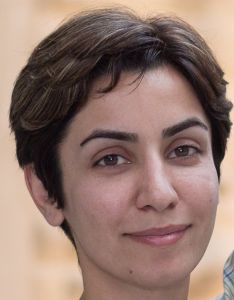Engineering 2D lattices from 1D spin chains, Dr. F. Rajabi
Room: 100
Department of Physics and Astronomy
PHYSICS & ASTRONOMY COLLOQUIUM
Dr. Fereshteh Rajabi
Perimeter Institute for Theoretical Physics (PI)
Institute for Quantum Computing (IQC)
University of Waterloo
“Engineering 2D lattices from 1D spin chains”
ABSTRACT
The study of many body quantum systems poses a serious challenge even for the strongest classical simulation machines. This is because the size of the corresponding Hilbert space grows exponentially with the number of particles in a quantum system. To overcome this problem, in 1982, Feynman suggested using a quantum simulator to study highly correlated many body systems. In essence, a quantum simulator is a highly controllable quantum system that can be used to simulate another less controllable system. A leading candidate for quantum simulation is a system of trapped ions where each ion acts as a qubit (i.e., a two-level or spin one-half system). Trapped ions are especially useful for the study of spin models. Controlling the interaction between spins or qubits in a quantum simulator allows user controlled tailoring of native interactions to achieve a target Hamiltonian. Engineering long-ranged phonon-mediated spin-spin interactions in a trapped ion quantum simulator offers such a possibility. Trapped ions are most readily trapped in a linear 1D chain, limiting their utility for simulating higher dimensional spin models. In this talk, I will introduce a hybrid method of analog-digital simulation for 2D spin models that allows for the dynamic changing of interactions to achieve a new graph using a linear 1D chain. I will focus on engineering 2D rectangular nearest-neighbor spin lattices, demonstrating that the required control parameters scale linearly with ion number. This hybrid approach offers compelling possibilities for the use of 1D chains in the study of Hamiltonian quenches, dynamical phase transitions, and quantum transport in 2D and 3D.

